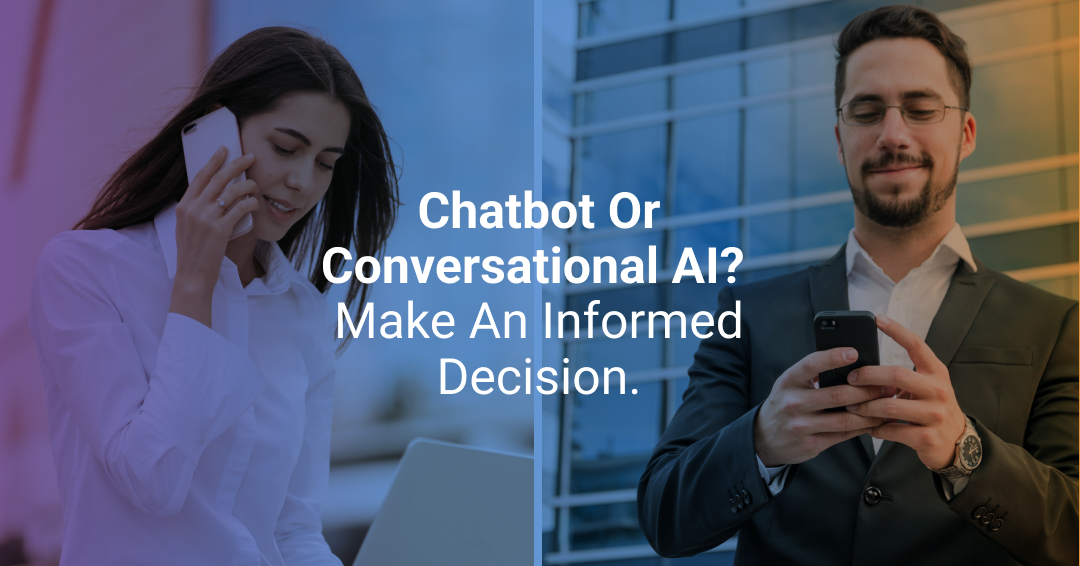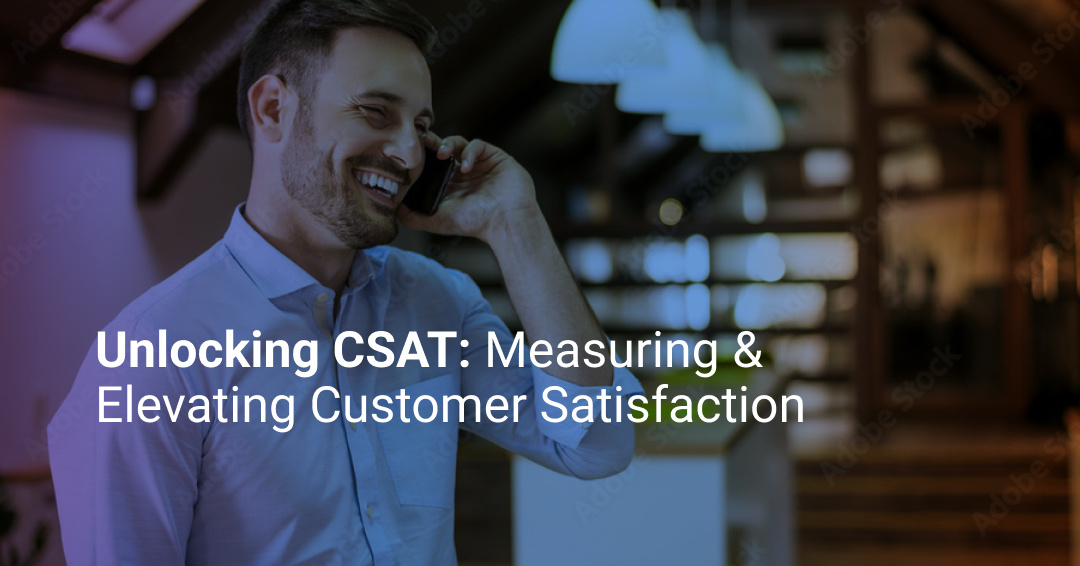12 Call Center Metrics You Should Be Using to Improve CX in 2025
Call center metrics are the most important performance indicators that monitor how effectively your call center is running. This includes anything...
6 min read
![]() Mosaicx
:
July 12, 2024
Mosaicx
:
July 12, 2024

Chatbots and conversational AI are often paired together as the same type of technology. While they can be similar in some ways, they are quite different.
Chatbots are one of the simplest forms of automation. They rely on having clear user scenarios and pre-programmed responses. Sometimes chatbots are great with simpler interactions that do not require complex conversations and help users have a successful self-serve experience. Many times, however, they fall short. Regardless, they represent a massive global market of about 9.4 million according to some experts.
Conversational AI, on the other hand, is natural-like and adaptive technology that doesn’t rely exclusively on predetermined paths. It can feel more human and less robotic. It doesn’t just have predetermined conversational routes and options. Instead, it has the ability to identify intent and provide an answer that matches.
Chatbots are computer programs that simulate human conversation via text. Their origins can be traced back to the 1960s with ELIZA, a program that simulated a psychotherapist and impacted the scientific community back then. Other chatbots such as PARRY in the 1970s, Jabberwacky in the 1980s, and ALICE in the early 1990s followed these initial efforts, and as we expected, their complexity and conversational abilities improved. By the early 2000’s, an even more advanced chatbot called SmarterChild was created, and since then, they have become more and more common.
Today, chances are you have interacted with Apple's Siri, Google Assistant, and Amazon's Alexa, which have started to incorporate AI but remain still pretty fairly basic in comparison with advanced conversational AI options in the market.
To put it in simpler terms, chatbots are rule-based systems that help customers accomplish something.

Banking Chatbot: Banks use rule-based chatbots to help their customers with simple tasks such as checking account balances, transactions, and locations. Usually, these chatbots interpret user queries based on their previously programmed rules to provide accurate responses within those predefined journeys.
Customer Service: Chatbots are common in customer service and have a role to play in handling everyday customer service tasks. For example, with a chatbot, you can help your customers track orders, process returns, and even provide answers to some of the most common questions they may have. Just like in the banking scenario, they follow a predetermined set of rules to provide their answers to customer’s queries.
Conversational AI, like chatbots, is a tool that helps organizations provide better services by automating customer service. However, unlike chatbots that use rule trees and predetermined programmed answers, conversational AI uses machine learning technologies to provide answers that are more nuanced, require a much clearer understanding of user intent and can adapt and evolve instead of being limited by a predetermined set of answers. It can also operate in both text and voice channels.
Conversational AI really came about in the 21st century, with virtual assistants like Siri, Google Assistant, and Amazon's Alexa. These assistants used natural language processing (NLP) and machine learning technologies to identify what was being said and what would be the most accurate answer for that particular query. More advanced conversational AI options that adapt directly to business cases have also been developed, such as Mosaicx, helping businesses provide natural-sounding solutions via conversational AI to user queries.
Technology Assistants: Technology devices that use conversational AI have slowly become part of our lives. Finding a home without some conversational AI tech device to help them turn on the lights, play their favorite songs, or set timers is rare.
The line between chatbots and conversational AI is a bit blurry. Some companies position themselves as conversational AI providers even though they really build rule-based chatbots. However, at an essential level, chatbots are mostly and primarily rule-based technologies that do not have the capacity to act beyond those boundaries while conversational AI is a much richer and robust option.
Some similar features are:
As we mentioned, chatbots are the more basic version of conversational AI technology. Both can help companies with their customer support activities, but only conversational AI partners can provide a less rigid and smarter option to solve customer support queries properly.
Among their top differences are:

An excellent way to think about what solution is right for your organization is to step into your end-user's shoes. Would they be able to solve most of their questions and problems by having a virtual assistant with a predetermined set of options? If the answer is yes, then a chatbot would suffice. This is often true for service scenarios where most issues are quickly resolved or relatively common.
On the other hand, if the user of your service or product has a more complex interaction with your brand and may require a context-ready virtual assistant to get the help it needs, conversational AI technologies will almost always beat chatbots.
Mosaicx is an AI-powered customer service platform that enables organizations to create intelligent virtual agents (IVAs) to solve user queries. With our conversational AI technology, you can efficiently and accurately resolve customer inquiries with a tool that identifies intent and adapts based on context to provide the best solution possible. On top of that, we constantly innovate and learn more about AI, ML, and predictive intent technologies and other combinatorial technologies that help our partners improve the service quality provided.
Q: Is ChatGPT a Conversational AI?
Yes, ChatGPT is a conversational AI provider. Their team is more focused on research and startup-scale implementation. If you need a more robust and experienced partner for your enterprise, options like Mosaicx are better.
Q: Is Conversational AI Expensive?
Like most technological products today, the price range varies. However, a conversational AI partner will likely be more expensive than a chatbot solution because they have a more complex technological backend and more advanced features, but it also provides a higher ROI, so it’s usually the smarter financial choice.

Call center metrics are the most important performance indicators that monitor how effectively your call center is running. This includes anything...

Businesses across industries have changed or evolved over the decades, but one thing that has remained the same is that their growth is pretty much...

Customers have several major expectations from modern businesses, but none is as challenging as them reading your mind to anticipate support you...